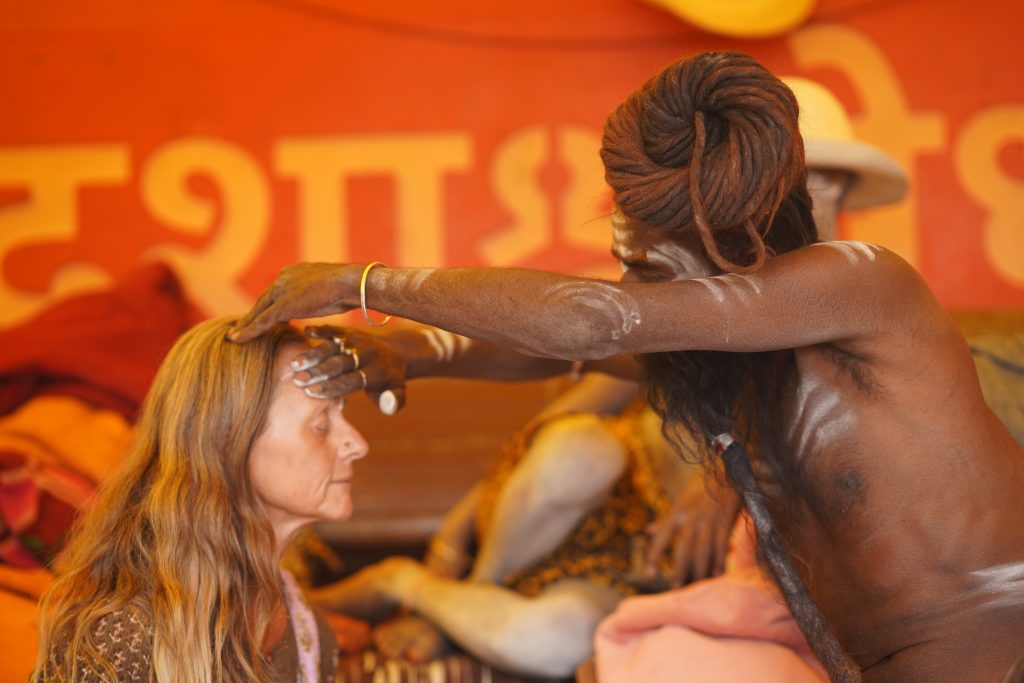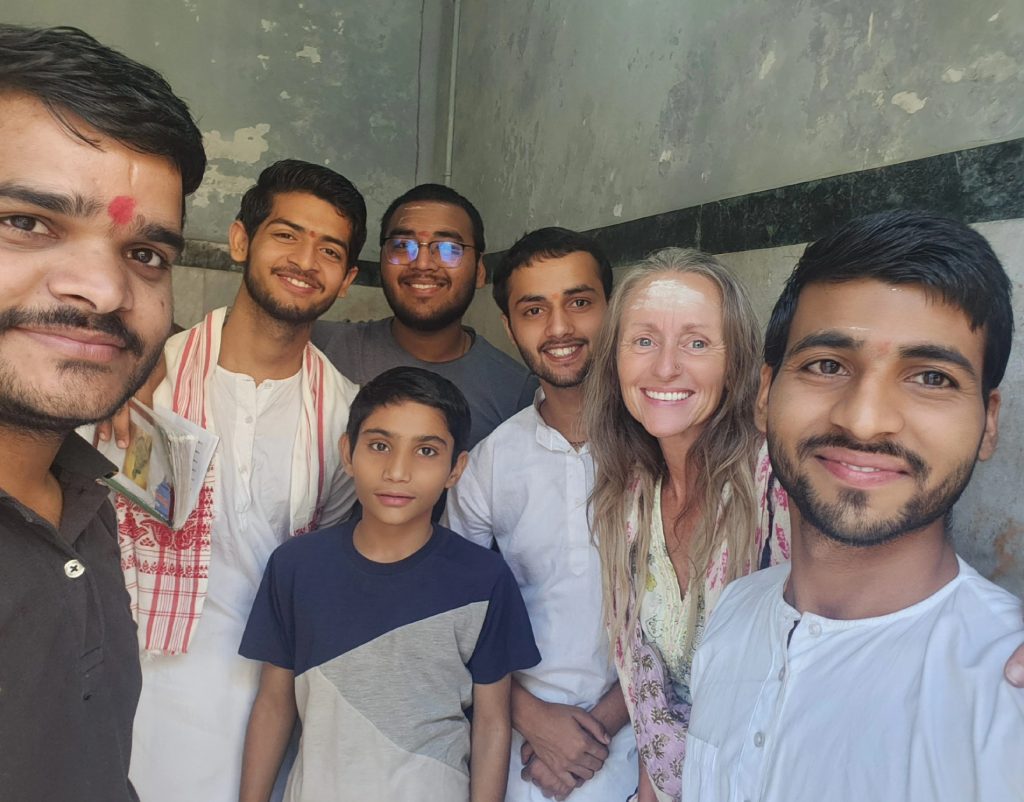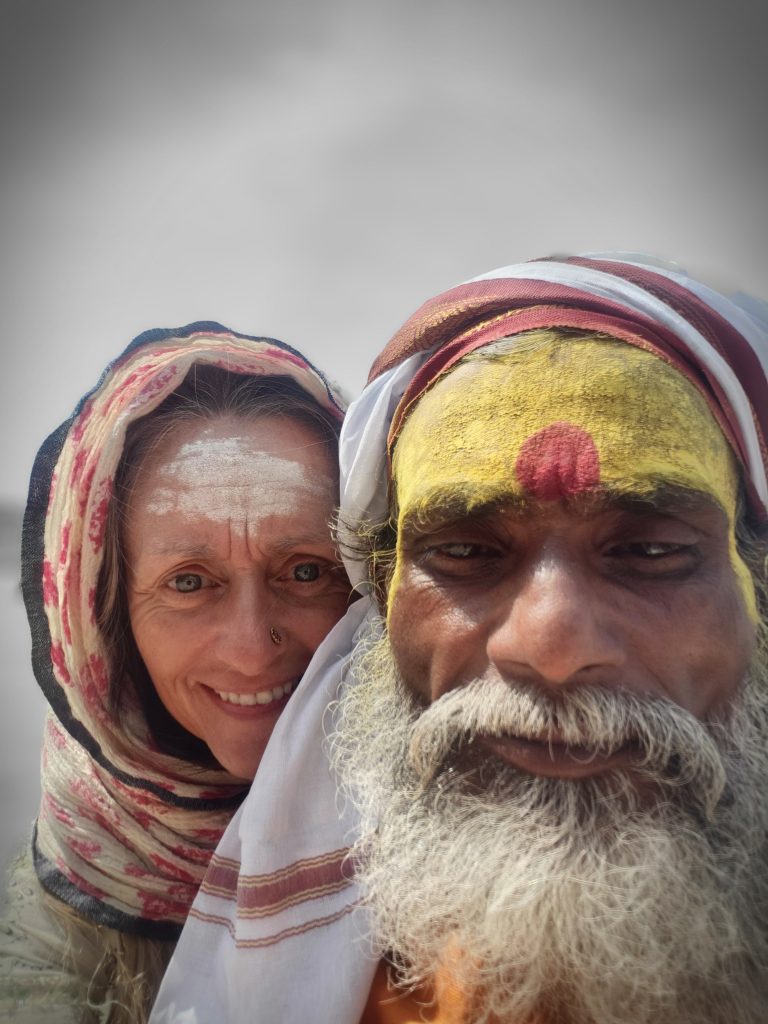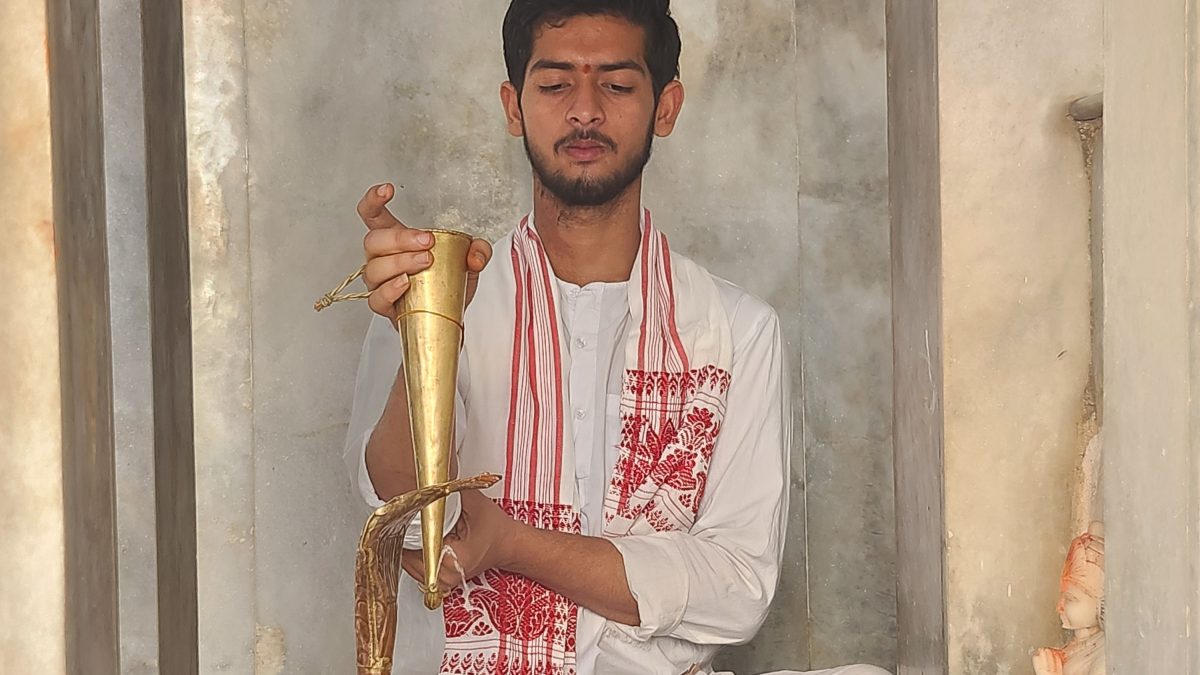Bhakti Yoga
The Bhakti Movement was a spiritual and social reform movement in medieval India. It emphasised personal devotion to the Divine over ritualistic practices. Its historical significance lies in breaking caste barriers, promoting equality, and reshaping religious traditions by making spirituality accessible to all.
Bhakti means devotion and Bhakti Yoga is liberation from pain and suffering through the path of devotion. Bhakti yoga is the practice of devoting oneself to a specific deity or form called an istha devata.
A brief history
The Bhakti Movement originated in South India in the 7th century, led by the Alvaras, worshippers of Lord Vishnu and the Nayanars, worshippers of Lord Shiva. These devotees travelled to various places singing hymns in praise of their Gods, and many temples were built as sacred places of pilgrimage. Over the centuries the Bhakti movement travelled through Indias cities and tribal communities, to the North reaching its peak in the 15th-17th centuries. It is believed the movement has its roots in the Brahmanical and Buddhist traditions of ancient India, the Sufis, and to various sacred scriptures such as the Bhagavad Gita.
Starting as a religious revival, to counter the rise of Jainism and Buddhism, the Bhakti movement evolved into something far more, as it shaped cultural, religious and societal norms. Not only did it shift the focus of worship from ritualistic practices to devotional practices such as poetry, music, dance and art, but it also succeeded in advocating the cause of religious equality for women and lower caste people, inviting them into the womb of worship and allowing them access to sacred scriptures such as the Vedas for the first time.
At its heart, the Bhakti movement was characterised by mysticism and a soaring passion for divinity within and without. Saints who led the movement placed an emphasis on human rights and a deep devotional connection between man & the Divine over complex and exclusive ritualistic practices and Brahmanical orthodoxy.

Features of the Bhakti movement
- A focus on specific deities (Shiva, Vishnu, & their various tribal representations) allowed devotees to develop a deeper emotional connection to the Divine, expressing their love and devotion through various forms of art and poetry.
- Use of Local Languages: Bhakti poets and saints wrote and communicated in local languages making their teachings accessible to the common people.
- Nomadic nature: Many Bhakti saints were nomadic, travelling from village to village to spread their messages of love, devotion, and equality.
- Equality for ALL: The Bhakti Movement included individuals from varied social backgrounds, including lower classes and This inclusivity broke traditional barriers, emphasizing that anyone could attain spiritual fulfilment, regardless of caste, gender, or social status.
- Personal God and devotion: Bhakti saints preached that the Divine is a personal being who can be directly worshipped with love and devotion by ALL. This devotion was often expressed through songs, poetry, and prayers, known as bhajans or kirtans.
- Salvation through devotion, not rituals: Bhakti philosophy rejected the complex rituals and priestly mediation of traditional Hindu practices. Saints emphasised the importance of inner devotion, love, and faith over external rituals or sacrifices. Salvation, or moksha, was attainable through a direct, personal connection with the Divine.
- Simple, pure life: Leading a life of simplicity, humility, and surrender to the Divine was considered essential. Bhakti saints advocated for a path of love and service rather than intellectual knowledge or asceticism.
- Salvation (Moksha): Bhakti philosophy posits that anyone can attain salvation through unwavering devotion to the Divine. The goal is union with the Divine, breaking free from the cycle of birth and death (samsara).
For an easy 30min lecture on the Bhakti movement go HERE
Bhakti yoga today
Bhakti yoga is the practice of connecting with a specific ishta devata (greatest or most cherished deity) and offering worship and devotion to this ishta daily. The focus is on selfless devotion and recognition of the sacred or divine nature in that object or form. Bhakti yoga encourages you to cultivate devotion for something that is much bigger and greater than yourself.
In the Bhagavad Gita, Lord Krishna says that the path of devotion is the highest among all types of spiritual practices because it is difficult to meditate upon the unmanifest aspect of the Divine – Bhakti takes time, practice and patience. Devotion must be cultivated.
Bhakti yoga is a progressive form of practice. One starts with a little devotion and gradually this grows. Bhakti is often referred to as ‘Yoga of the heart’, as it is practiced through love and service. According to the Narada Bhakti Sutras, bhakti is intense love for the Divine. It is a deep yearning to experience love in its purest and highest form, to unite with that which is eternal and unchanging.
The path of bhakti yoga allows us to use all our senses, all of our emotions, and all of our actions to express love in our daily interactions and offer them to whatever form of the Divine serves us. Bhakti recognises all forms of the Divine as equally valid manifestations of the one underlying principle of pure consciousness.
To watch a short documentary (20mins) about Bhakti – The ancient Teachings of Bhakti Yoga HERE
Practices to cultivate Bhakti
- The practice of daily gratitude
- Treat others with kindness and respect – the way you would like to be treated
- Imbue all your actions with an attitude of love, reverence, and devotion.
- Give blessings of appreciation
- Chant mantras
- Devotional singing – Kirtan
- Rituals such as puja and Aarati – Set up an altar with a favourite image or representation of the Divine and offer flowers, fruit, or incense; chant or do mental worship.
- Cultivate appreciation and forgiveness in your heart
- Recognise the devotional in everything that exists
- Meditate on your chosen ishta devata. Visualise the image—either the face or the feet or the whole image in your heart or the space between your eyebrows and concentrate on it.
- Offer your daily practice of yoga to your ishta.
- Choose a relationship with the Divine that feels natural. The Bhakti Sutras say that we can worship the Divine as a faithful servant, a loyal friend, a loving parent, or a devoted lover.
- Appreciate the wonder and beauty of nature, seeing it as a manifestation of the Divine.
- Give something up, temporarily or for good, as an offering to your Ishta devata (i.e. fasting one day a week)
- Purify your thoughts and actions by reading sacred scriptures – for example The Bhagavad Gita
- Practice forgiveness and compassion. Accept your faults and the faults of others.
- Be humble. Do something that no one else likes to do as an
- Give a little more of yourself to someone who needs it, without expecting anything in return.
To connect with the Bhakti Yoga youtube channel of Sacinanda Swami go HERE

The path of Bhakti
Like with most practices’ bhakti yoga has different stages we progress through as our heart softens and open to the Divine. There is a natural progression of these stages for most of us however we go in out of them repeatedly
The initial stage of Bhakti yoga generally involves external forms of worship – such as singing, chanting, pujas, creating yantras, and study.
Next comes the practice of contemplation. Contemplation is an important companion practice to devotion. Knowledge helps us discriminate between what is eternal and unchanging and what is fleeting and impermanent. Contemplation also helps us stay grounded. It is a good time to study a sacred scripture, such as the Bhagavad Gita, the Puranas, or the Bhakti Sutras. Contemplate how these teachings create a philosophical framework for viewing your life in a larger spiritual context, and how you can put the teachings into practice.
Adding in japa, or recitation of a mantra, creates a deep positive impression in our unconscious mind. By strengthening the habit of saying our mantra daily, both in seated meditation and throughout our daily activities, our negative thought patterns start to weaken. Mantra gives our minds a one-pointed focus in our meditation, allowing us to deepen our connection to the Divine. We should choose a mantra that strengthens our bond to our chosen Ishta and that resonates with us and recite the mantra with a mala 108 times each day. To cultivate bhakti while we are doing your japa, we can rest your awareness at your heart centre.
In the last stage of Bhakti, worship is mainly internal. In this act of internal surrender, we open ourselves to receiving grace. The light of the Divine descends and manifests, and a profound sense of joy floods our being.
The sages and scriptures extol the path of service and surrendering the fruits of our actions as the highest path. By cultivating the principles of love, compassion, gratitude, surrender, and selfless service Bhakti yoga induces a heightened sense of positivity, hope, love and joy within the practitioner and in their surroundings. The practices change the vibe in the room, creating an energetic, positive and peaceful environment. Bhakti yoga improves mood and is linked to promoting psychological well-being. It reduces stress, worries and anxiety. Bhakti invokes hope, and improves focus, concentration, patience and determination. It even helps improve pain tolerance and has immense healing powers. Regular practice of Bhakti yoga leads to a balanced and blissful state of being.
To join me in travels to sacred Hindu lands go HERE



